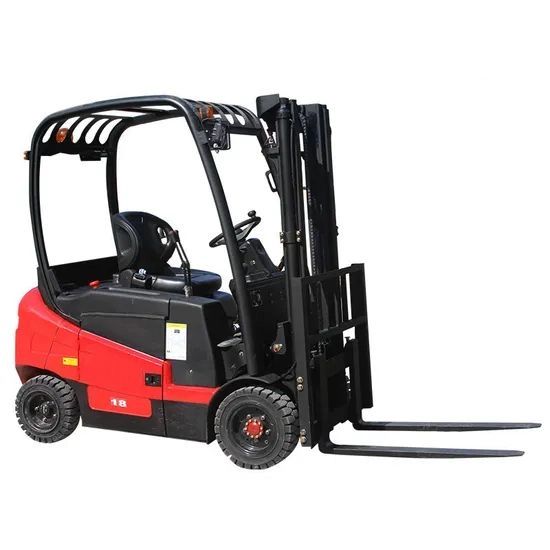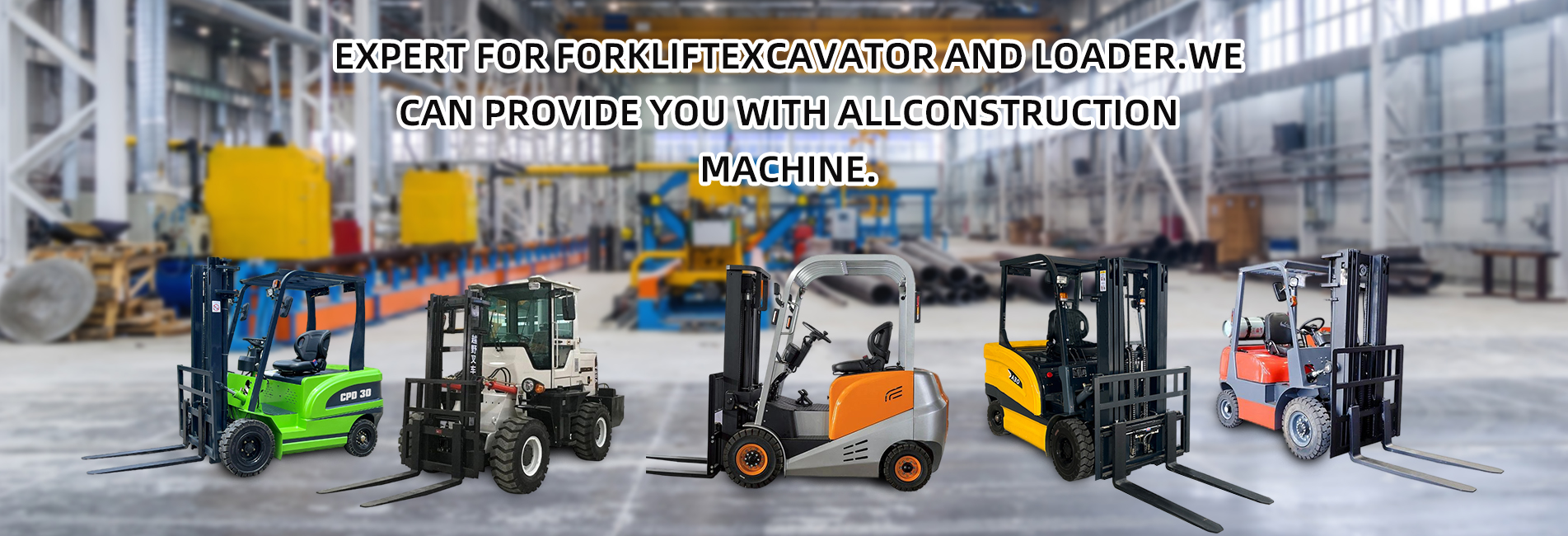The core focus is on the four key dimensions of "principled troubleshooting of core systems, application of professional tools, specifications for high-risk operations, and preventive diagnosis". These elements are the key to distinguishing ordinary self-inspection from professional maintenance, enabling more accurate identification of root causes of faults while avoiding in-depth safety risks.

I. "Principled Fault Troubleshooting" for the Three Core Systems (Core of Professional Maintenance)
Eighty percent of electric forklift faults occur in the electrical, hydraulic, and transmission systems. Troubleshooting these requires analysis based on system principles rather than just superficial observations.1. Electrical System: Moving Beyond Superficial Checks That "Only Look at Battery Level"
Troubleshooting electrical system faults should not be limited to checking for "no power" or "loose plugs"; instead, it is necessary to conduct in-depth inspections of high-voltage circuits and control logic:Professional Inspection of Battery Packs
- Ordinary self-inspection: Check the battery level on the instrument panel.
- Professional inspection: Use an internal resistance tester to measure the internal resistance of each individual battery cell (normal internal resistance ≤ 8mΩ for lead-acid batteries and ≤ 50mΩ for lithium batteries). If the internal resistance of a cell increases by more than 20%, it indicates a "lagging cell" that needs replacement (instead of replacing the entire battery pack, reducing costs).
Common Misconception
A battery that "cannot be fully charged" is not necessarily due to a faulty charger. It may be caused by a short circuit in one of the cells. A charge-discharge tester should be used to perform a cycle test to determine if the battery capacity has decreased by more than 20% (if so, replacement is required)."Code Interpretation" for Controller Faults
When a controller displays a fault code (e.g., E03, E08), accurate identification must be made by referring to the forklift brand’s "fault code manual":- Example: E03 (overcurrent protection) → Do not simply replace the controller. First, check if the motor windings are short-circuited (use a multimeter to measure the resistance of the three-phase windings; values should be balanced with a difference ≤ 5%) and if there is any damage or grounding in the wiring.
- Example: E08 (undervoltage protection) → In addition to checking the battery level, measure whether the total battery voltage is lower than 85% of the rated voltage (e.g., below 40.8V for a 48V battery). If the voltage is normal but the alarm persists, the voltage detection module of the controller may be faulty.
"Sound + Data" Judgment for Motor Faults
- Abnormal noise judgment: A "buzzing sound" during motor operation → May indicate unbalanced three-phase current (check if the wiring connections are loose); a "friction sound" → May indicate bearing wear (the motor needs to be disassembled for inspection, and the replacement bearing must match the original factory model to avoid shaft diameter wear).
- Temperature judgment: Use an infrared thermometer to measure the motor housing temperature, which should normally be ≤ 80℃ (at an ambient temperature of 25℃). If it exceeds 100℃, stop operation immediately and check for overload (actual load exceeding the rated value) or short-circuited windings.
2. Hydraulic System: Moving Beyond Superficial Treatments That "Only Add Oil"
The core of hydraulic system faults lies in three factors: "pressure, flow, and sealing," which require detection using professional tools:Accurate Identification of Pressure Abnormalities
When the fork has insufficient lifting force or slow speed and ordinary self-inspection (adding oil) is ineffective, connect a hydraulic pressure gauge to the "lift cylinder oil inlet test point" (all forklift hydraulic systems have reserved test points):- If the pressure is lower than the rated value (e.g., 16MPa for a 3-ton forklift) → First check the hydraulic pump (for internal leakage, which can be determined by measuring the pump outlet pressure), then check the relief valve (for failure of the pressure-regulating spring, which needs to be disassembled, cleaned, or replaced).
- If the pressure is normal → Check for internal leakage in the cylinder (when unloaded, lift the fork to the highest position, turn off the engine, and observe the fork’s descent within 10 minutes; normal descent should be ≤ 5mm. Excessive descent indicates wear of the cylinder seals, requiring replacement of the entire seal set rather than just the oil seal).
"Contamination Level" Detection of Hydraulic Oil
If the hydraulic oil turns black or contains impurities, do not just replace the oil. Use an oil contamination detector to measure the NAS grade (ordinary electric forklifts require NAS grade 8 or below):- If the NAS grade exceeds 10 → Simultaneously clean the hydraulic oil tank and filters (replace the return oil filter and suction filter), and check for rust in the hydraulic pipes (impurities mostly come from pipe rust or wear debris of seals). Otherwise, the new oil will be quickly contaminated.
"Action Test" for Multi-way Valve Faults
If the fork tilts without movement or jams, operate the multi-way valve handle and check for "sticking of the valve core":- If sticking occurs → Disassemble the multi-way valve, polish the valve core with fine sandpaper (600 grit or higher to avoid scratching the core surface), clean the valve body cavity, and apply hydraulic oil for lubrication during reassembly to prevent seal damage.
3. Transmission System: Moving Beyond Simple Checks That "Only Look at Tires"
Faults in the transmission system (drive axle, steering axle, coupling) are easily overlooked but directly affect driving safety:"Abnormal Noise + Oil Temperature" Judgment for Drive Axle Faults
- A "clunking sound" during driving → May indicate wear of the gears inside the drive axle (disassemble to check for pitting or tooth breakage on the gear surfaces. When replacing, ensure the meshing clearance of the gear pair; excessive or insufficient clearance will accelerate wear).
- Excessively high temperature of the drive axle housing (too hot to touch by hand, > 60℃) → Check the gear oil level (for insufficient oil or deteriorated oil quality; replace with special gear oil, not hydraulic oil) or bearing damage (use a puller tool to remove the bearing to avoid shaft diameter deformation caused by forceful hammering).
Professional Adjustment for Steering System "Deviation"
When ordinary self-inspection (adjusting tire pressure) is ineffective, check the "steering tie rod ball joints" (for looseness; replace if there is play) and "steering cylinder stroke" (use a tape measure to check if the telescopic lengths of the left and right steering cylinders are consistent. If not, adjust the joints at both ends of the cylinders to ensure symmetrical steering angles).II. "Tool Dependence" in Professional Fault Diagnosis (Difficult for Ordinary People to replace)
Professional maintenance relies on specialized tools, and the application scenarios of tools directly determine the accuracy of fault identification:| Tool Name | Core Purpose | Key Professional Operation Points |
|---|
| Internal Resistance Tester | Detect the health status of individual battery cells | Power off the battery pack before testing; press the probe firmly against the cell terminal to avoid contact resistance affecting data. |
| Hydraulic Pressure Gauge | Detect pressure in each circuit of the hydraulic system | Relieve pressure first before connecting to the test point (operate the corresponding handle to move the cylinder unloaded, then turn off the engine) to prevent oil splashing. |
| Infrared Thermometer | Detect temperature of components such as motors, controllers, and drive axles | select the "core heating area of the component" (e.g., motor rear cover, controller heat sink) as the measurement point; avoid measuring the surface paint layer. |
| Multimeter (DC Mode) | Detect voltage, current, and resistance in electrical circuits | Use a "clamp multimeter" to measure the controller output current (to avoid disconnecting the circuit); select the DC 200A range. |
| Oil Contamination Detector | Detect impurity content in hydraulic oil and gear oil | Extract samples from the middle of the oil tank (to avoid bottom sediment affecting results); clean the sampling tube before sampling. |
III. "Professional Safety Specifications" for High-Voltage and Hydraulic Systems (Accident Prevention)
Professional maintenance must strictly comply with safe operation procedures, which cover high-risk points not addressed in ordinary self-inspection:Safety Specifications for High-Voltage Electrical System Operations
- When maintaining batteries, controllers, or motors, first turn off the "main battery switch," then use a "voltage tester" to check if the wiring harness is live (proceed only after confirming no electricity).
- When replacing battery cells, wear "insulated gloves (withstand voltage ≥ 500V)" and "goggles" to prevent skin corrosion from electrolyte leakage (for lead-acid batteries) or short-circuit sparks (for lithium batteries).
- Smoking or using open flames near batteries is prohibited. Batteries must be charged in a well-ventilated area (to prevent hydrogen accumulation, as hydrogen can explode when exposed to open flames).
Pressure Relief Specifications for Hydraulic Systems
- Before disassembling hydraulic pipes, multi-way valves, or cylinders, first perform "no-load pressure relief": Lower the fork and mast to the lowest position, and repeatedly operate the lifting and tilting handles 3-5 times to ensure the system pressure drops to 0MPa. Otherwise, high-pressure oil may splash from the disassembly point, causing personal injury.
- When replacing hydraulic seals, use "special tools" (e.g., oil seal installation sleeves) to avoid prying with a screwdriver, which may scratch the cylinder inner wall (scratches will cause rapid seal wear and re-leakage).
IV. "Fault Tracing and Preventive Maintenance" (Extension of Professional Maintenance)
Professional maintenance not only "repairs faults" but also "prevents recurrence," with the core being fault tracing and regular detection:Fault Tracing Methods
After repairing each fault, record the "service life of the faulty component" (e.g., battery used for 3 years, motor used for 2 years) and compare it with the original component lifespan (2-3 years for lead-acid batteries, 5-8 years for motors) to determine if the fault is due to "normal aging" or "abnormal damage."- If it is abnormal damage (e.g., the motor fails 2 years early), trace the cause to check for "long-term overload" (review forklift usage records to see if it frequently handles loads exceeding the rated capacity) or "improper maintenance" (e.g., the motor heat sink was not cleaned regularly, leading to overheating and aging), and develop targeted improvement measures (e.g., limiting load capacity, increasing monthly heat sink cleaning).
Preventive Detection Cycle (Professional Recommendations)
- Daily: Check battery voltage (displayed on the instrument panel), hydraulic oil level, and braking performance.
- Monthly: Use an internal resistance tester to measure the internal resistance of battery cells, use an infrared thermometer to measure the temperature of the motor, check for leakage at hydraulic pipe joints.
- Quarterly: Detect hydraulic system pressure, replace hydraulic oil filters, check the drive axle gear oil level.
- Annually: Conduct a battery capacity test (charge-discharge cycle), detect hydraulic oil contamination level, test the insulation resistance of motor windings (using a megohmmeter; insulation resistance ≥ 1MΩ).



